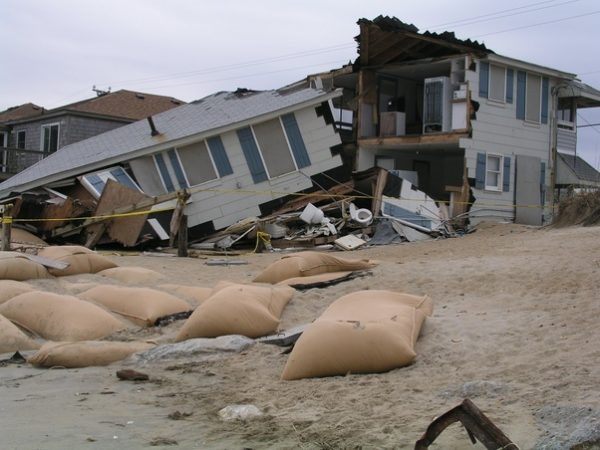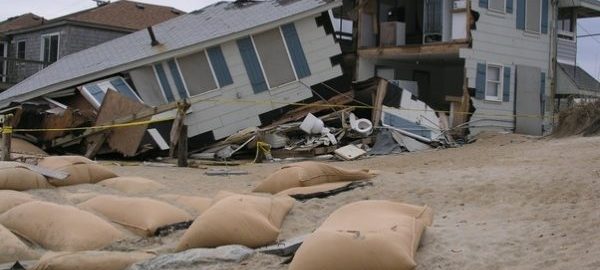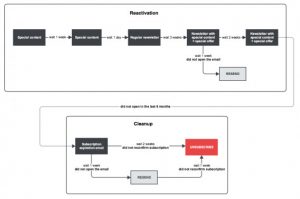— October 6, 2017

The onslaught of major natural disasters in the past month is forcing companies to consider how they can and should respond to such overwhelming need. Hurricanes Maria, Irma and Harvey have literally rained down devastation, an earthquake in Mexico has left hundreds dead, and wildfires in California rage out of control.
As climate change continues to warm the planet, extreme weather events are only going to increase. Already, disasters around the world related to climate change have increased 41 percent in 2015 compared with the previous decade’s annual average. Since disasters can greatly impact profitability for companies – directly and indirectly – businesses have a moral as well as a bottom line stake in mitigating the disruptions of disasters and helping communities and economies bounce back quickly. Further, the PR benefits of disaster preparedness and effective response can be immense, as Walmart found in the wake of its rapid and admired efforts when Hurricane Katrina struck.
But the private sector must get better at deploying its resources in ways that not only respond to disasters with immediate relief but with carefully considered strategies that can have maximum impact and address challenges over the long-term.
A new report from The Conference Board and GlobalGiving, ”The Future of Disaster Philanthropy,” addresses the issues which companies must consider in the face of increased disasters due to climate change. The research finds that companies must be nimble and creative in order to overcome the three biggest challenges to disaster philanthropy:
- Heightened risk of fraud. Businesses run into this when they align with controversial charities or forge public-private alliances too hastily, which can make companies shy away from engaging in any disaster philanthropy at all.
- Complex regulatory issues. Companies want to make sure that any aid they offer actually reaches disaster survivors, which can be difficult with onerous restrictions and taxes from country to country. The Conference Board report found that regulatory issues around the world are a significant and increasing problem for disaster philanthropists.
- Rising distrust of traditional institutions. The rising threat of extreme disasters demands creative solutions and risk reduction, but public trust in institutions and leaders across the board has cratered.
Smart disaster philanthropy is an increasing necessity as we face a more dangerous world driven by climate change. Companies should remember three key points as they formulate a disaster strategy that doesn’t kick in after disasters, but before:
Invest in risk reduction.
Risk reduction is critical to vulnerable communities. According to the United Nations, an annual investment of $ 6 billion in appropriate disaster risk management strategies could generate risk reduction benefits worth $ 360 billion, and every dollar invested into disaster preparedness saves seven dollars in disaster aftermath. Disaster-resilient infrastructure, early warning systems, and risk mapping are examples that the research shows could save lives.
Foster locally driven solutions
Edelman, which issues an annual Trust Barometer, advises businesses to help solve issues in their communities of operation. The cost of inaction is enormous: “Three out of four general population respondents [to the Edelman survey] agree that a company can take actions that both increase profits and improve the economic and social conditions in the community where it operates,” according to Edelman.
The report also finds that there is growing recognition that local communities must be involved in decision-making around disaster philanthropy. One of the best ways to build resilience against future disasters is by investing in the capacity of local communities and engaging employees to help with a customized disaster response plan, working with local nonprofits embedded in the communities.
Coca-Cola’s was praised for its strategic response to the 2004 Indian Ocean earthquake and tsunami because the company focused on locally driven disaster relief. As reported by Harvard Business Review: “The difference was that (Coca-Cola) had established relationships with aid agencies well before the tsunami struck. Coca-Cola…has for years maintained relationships with the Red Cross and other aid agencies in many countries. Working with local subsidiaries, Coca-Cola converted its soft-drink production lines to bottle huge quantities of drinking water and used its own distribution network to deliver it to relief sites. Similarly, British Airways, UPS, FedEx, and DHL all worked with their existing aid agency partners to furnish free or subsidized transportation for relief cargo.”
Include more stakeholders, including employees, in disaster decision-making.
The Eli Lilly Foundation has benefited from engaging employees in every step of its disaster infrastructure. When Typhoon Haiyan hit the Philippines, where Lilly has an office, Lilly employees made nearly 1,000 donations within one month, which totaled $ 160,000 with the Lilly match.
The Center for Disaster Philanthropy echoes some of these recommendations with its own conclusions about effective disaster philanthropy. Above all, funders should think of themselves as disaster philanthropists and tie their responses into their existing business missions.
As your company considers how it can develop a disaster philanthropy strategy that will help communities over the long term, here are ways that you can get involved immediately:
- In Puerto Rico: Puerto Rico’s first lady Beatriz Roselló set up Unidos por Puerto Rico to connect the private sector to those in need. Donations can be sent in a variety of ways, including PayPal.
- Another option in Puerto Rico is ConPRmetidos, which shifted its focus from innovation to helping victims of Hurricanes Maria and Irma. They are accepting donations here.
- In the New York area: The Hispanic Federation teamed up with New York politicians including the mayor and members of Congress to launch “Unidos”: A Hurricane Relief Fund for Hurricane Maria Victims in Puerto Rico, which will give 100% of its proceeds to hurricane relief and recovery efforts. Per the website, to donate via text, text to number 41444. Type UNIDOS (space) YOUR AMOUNT (space) and YOUR NAME. (For example: Unidos 100 John Doe) Then press “send” and click on the link to complete your donation. Or just donate here.
- In the Miami area: The Puerto Rican Leadership Council is accepting donations of nonperishable food, water, and clothing at several locations. The Miami Herald has the details.
- In the Philadelphia area: Nonprofit group El Concilio has launched Unidos PA Puerto Rico to raise money for hurricane relief.
- Around the country: the Salvation Army is accepting hurricane relief donations.
- Volunteer disaster relief organization All Hands needs help rebuilding in the U.S. Virgin Islands.
- Hurricane Irma and Maria response group AmeriCares said they are working with officials in Puerto Rico to stock emergency shelters with medical supplies. This is in addition to their airlift of $ 1.8 million worth of medicine and supplies to the U.S. Virgin Islands.
- UNICEF USA says it is targeting children impacted by Irma and is on the ground with staff and equipment for water treatment, hygiene and more within the Caribbean.
- The Red Cross says it has mobilized its second massive hurricane response in two weeks and is providing critical aid for Irma and Harvey victims.
- Operation USA, a Los Angeles-based disaster relief group, offers a wide variety of ways to lend a hand from sending a check to donating air mileage.
- Americares, which is providing emergency health care access in Texas for Harvey victims, is also partnering with health centers in Florida along Irma’s path.
- PayPal has launched a disaster relief campaign and says it will waive processing costs to ensure that 100% of donations go toward the effort.
- Habitat for Humanity is working with its local offices in Florida and the Caribbean to inspect damage from Irma. The group is helping families clean up after both Harvey and Irma and will help with rebuilding efforts. Donations can be made at habitat.org/hurricanes or by calling 1-800-HABITAT.
- The Salvation Army has mobilized Harvey and Irma relief teams to provide meals, shelter and emotional and spiritual care, the organization says.
- The American University of Antigua has created a fund specifically for the battered nation of Barbuda to provide food, water and medicine in addition to longer-term recovery assistance. All donations to this fund will be matched by AUA, the university says.
- Charity Navigator, a watchdog that appraises charities based on their tax filings, lists 22 groups responding to Irma that hold at least a three-star rating. You can find the list here. The group advises people to research relief organizations before making a donation.
It’s overwhelming and heartbreaking to see scenes of devastation unfolding in so many communities right now. The best way to step up is by taking a broader vision of disaster relief as something more than a short-term reaction, but rather a larger strategy of disaster philanthropy that should be a pillar of your overall CSR program.
Digital & Social Articles on Business 2 Community
(29)








